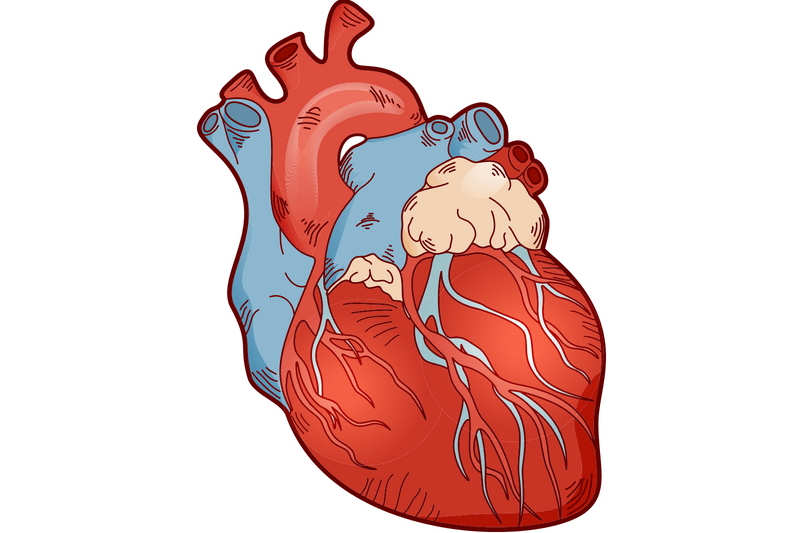The World Health Organization (WHO) recommends 6 months of exclusive breastfeeding during the first year of life. After 6 months, complementary feeding should be introduced. Breastfeeding should be continued up to 2 years and beyond.
Breastfeeding saves lives of infants and reduces the disease burden for the mothers as well as infants.
Many people are unaware that breastfeeding is not just beneficial for the newborn, but it delivers benefits to the mother as well. Yet, some women choose not to breastfeed. Such women miss an opportunity for improving infant health as well as maternal health.
Evidence states that women who breastfeed are likely to have improved health in the short-term and are at a lower risk of developing diseases in the future.
Breastfeeding Benefits for Women
Let’s have a look at the health benefits of breastfeeding for women:
Reduces the Risk of Breast Cancer

Research has found that women who breastfeed exclusively are at a lower risk of developing breast cancer as compared to women who breastfeed non-exclusively.
One interesting study found that the risk of breast cancer is reduced by 7% for each baby a woman has. Furthermore, if the woman breastfeeds for 12 months, the risk is further reduced by 4.3%.
Prolonged breastfeeding results in longer periods of time during which women do not have their menstrual cycles. Fewer lifetime ovulatory cycles are associated with reduced risk of breast and ovarian cancer.
Certain hormones, like estrogen, are linked to increased risk of cancer. Reduced lifetime exposure to such hormones, reduces the risk of cancer. On the other hand, women who do not have children or women who do not breastfeed are at an increased risk of cancer because they typically experience more lifetime ovulatory cycles.
Besides this, after lactation, the breast gets rid of cells with damaged DNA, which otherwise may be responsible for cancer.
Protects against Cardiovascular Diseases

Studies have found that breastfeeding is associated with cardiovascular health benefits. Therefore, breastfeeding should be incorporated in the development of potential strategies to prevent cardiovascular disease in women.
Breastfeeding has some short-term benefits to maternal heart health, which include:
- Insulin sensitivity
- Glucose homeostasis
- Lipid homeostasis
Another study found a link between lactation and lower blood pressure. Because lactation protects against hypertension, it reduces the hardening of the arteries and decreases the risk of coronary heart disease.
Breastfeeding is also associated with a drop in the levels of inflammatory markers, which otherwise increase the risk of heart diseases.
In addition to this, breastfeeding mobilizes fat stores accumulated during pregnancy. It prevents the storage of fat in the tissues, which in turn protects the heart.
Hormones involved in breastfeeding reduce stress levels and promote relaxation, which may be beneficial in preventing hypertension. Hence, breastfeeding exerts a beneficial impact on the maternal heart health.
Helps Women to Lose Weight

Pregnancy is associated with weight gain. Failure to lose pregnancy-related weight gain is a contributor to obesity and other serious chronic conditions among women.
Studies have found that women who breastfed for even 3 months had positive weight loss results and greater probabilities of returning to their pre-pregnancy weight. It is easier for such women to return back to their pre-pregnancy body mass index (BMI) as compared to women who do not breastfeed at all or breastfeed non-exclusively.
This weight loss is due to increased energy expenditures during lactation or hormonal changes. The positive weight loss outcome can be seen after 3-6 months of breastfeeding and maximum effects can be observed after 12 months of post-partum.
However, healthy eating and physical activity are still the two most important factors to determine weight loss.
Lowers the Risk of Type 2 Diabetes Mellitus
Lactation is linked to an improvement in the maternal glucose metabolism, reports a study.
An interesting research found that the risk for type 2 diabetes mellitus increases in mothers who breastfeed for less than one month independent of BMI and physical activity in later life.
Lactation may increase sensitivity to insulin. This pushes the glucose into the cells and muscles to provide energy to the entire body. It further prevents the presence of excess glucose in the bloodstream. That is why lactation improves glucose and lipid metabolism in women with gestational diabetes.
Lactation reduces visceral fat adiposity or abdominal obesity. Mothers who breastfeed for shorter durations may not lose all the visceral fat. Because visceral fat is more active and dangerous than other fat depots in different body areas, it increases the risk of developing diabetes mellitus.
Hence, exclusive breastfeeding is vital for glucose metabolism and overall maternal health.
Reduces Post-Partum Depression

Studies have indicated that 15-20% of women experience depression during pregnancy or the first 3 months after delivery.
Postpartum depression can impact the mother’s future mental health. It can also have a negative impact on the social, cognitive and physical development of their baby.
Several studies have found a positive link between longer breastfeeding durations and lower prevalence of postpartum depression. Women not engaging in breastfeeding are at a higher risk of postpartum depression.
Lactation attenuates responses to stress and boosts maternal mood. Hormones involved in breastfeeding, oxytocin and prolactin, have mood-ameliorating effects, suggests a study.
Oxytocin promotes relaxation and feelings of nurturance. Lactation reduces the level of stress hormones, which in turn enhances the mood and sleep cycle.
Hence, exclusive breastfeeding keeps the mind calm and helps the mothers to relax, sleep and eat better.
Reduces the Risk of Hypertension
A Chinese study found that women with no history of lactation or curtailed lactation were more likely to develop hypertension later in life as compared to women who breastfeed exclusively for 6 months.
It is well known that hypertension is associated with an increased risk of developing heart diseases and stroke. Oxytocin is a hormone, which is secreted during breastfeeding. This hormone possesses anti-hypertensive action, which prevents the onset of maternal hypertension in the future.
Oxytocin inhibits the release of stress hormones and induces a feeling of calmness and relaxation. Such a feeling inhibits stress-induced constriction of arteries and blood vessels.
This prevents a rise in the blood pressure and ensures smooth blood flow throughout the arteries without damaging the inner walls of the arteries.
Prevents Menstruation
Exclusive breastfeeding pauses the menstruation, thereby acting as a natural birth control for up to 6 months.
Women who breastfeed their children have a longer period of amenorrhea and infertility following delivery as compared to women who do not breastfeed. This lactational amenorrhea may be due to the high levels of circulating prolactin in the blood.
But, one should note that this is not a completely safe method of birth control.
This lactational amenorrhea can be an additional benefit for mothers, as they can spend a more comfortable time with their little ones.
Improves Mother-Infant Relationship

Breastfeeding
Breastfeeding doesn’t just benefit the physical health and nutritional status, but it also improves the mother-infant bonding. Breastfeeding induces a feeling of care and happiness in mothers, whereas bottle feeding is not associated with such a feeling.
Breastfeeding mothers tend to touch their infants more, this develops a sense of recognition in infants. Such mothers are even more responsive to their infants.
Furthermore, mother and infant spend more time during breastfeeding than do bottle feeding. An interesting research found that the development of maternal bond may go astray if they do not breastfeed during the first few hours or days after delivery.
Thus, breastfeeding improves the mother-infant bond, which makes the mother more responsive towards the baby and a sensitive caregiver.
A Cost-Effective Practice
The health benefits of breastfeeding for the mother and the baby are well studied. But, there is another major benefit of breastfeeding, which one may miss out. That benefit is ‘cost-effectiveness’.
Babies who are not breastfed by their mothers have to rely upon bottle feeds for optimum growth and development and nutrition.
Though bottle feeds also provide nutrition, but parents have to spend a lot of money on purchasing them.
On the other hand, breastfeeding is priceless. One does not need to spend any money on this natural source of better nutrition.
Bottle feeding can be time-consuming because mothers first need to prepare the feed and sterilize the bottles before and after use. This can be sometimes tiring, especially during the mid-night.
Infants who are breastfed, fall sick less often because breast milk is rich in compounds that fight infections. Bottle fed infants are at a higher risk of developing infections, which further increases the cost of a doctor’s visit and treatment.
That is why, healthcare professionals encourage exclusive breastfeeding, which is cost effective, full of nutrition and immunity booster.
Summary
Breastfeeding doesn’t just provide one-sided health benefits for the infant, but it is equally beneficial for the mother. It provides short-term as well as long-term health benefits, which may improve the quality of life of women.
It is important for women to know that breastfeeding won’t harm their health or spoil their body shape. In fact, breastfeeding helps one in regaining their pre-pregnancy body weight.
It also reduces the risk of various diseases and disorders. By exclusively breastfeeding, women do not just provide nutrition to their little ones, but they improve their own health too.
Hence, women should be educated about the benefits of breastfeeding, so that they can take out some time for it.
Also Read
References
- Dieterich, C. M., Felice, J. P., O’Sullivan, E., & Rasmussen, K. M. (2013). Breastfeeding and Health Outcomes for the Mother-Infant Dyad. Pediatric Clinics of North America, 60(1), 31–48. (http://doi.org/10.1016/j.pcl.2012.09.010)
- Moore, M. L. (2001). Current Research Continues to Support Breastfeeding Benefits. The Journal of Perinatal Education, 10(3), 38–41. (http://doi.org/10.1624/105812401X88327)
- Schalla, S. C., Witcomb, G. L., & Haycraft, E. (2017). Body Shape and Weight Loss as Motivators for Breastfeeding Initiation and Continuation. International Journal of Environmental Research and Public Health, 14(7), 754. (http://doi.org/10.3390/ijerph14070754)
- Woodman, I. (2002). Breast feeding reduces risk of breast cancer, says study. BMJ: British Medical Journal, 325(7357), 184. (https://www.ncbi.nlm.nih.gov/pmc/articles/PMC1143616/)
- Peters SA, Yang L, Guo Y, et al. Breastfeeding and the Risk of Maternal Cardiovascular Disease: A Prospective Study of 300,000 Chinese Women. J Am Heart Assoc 2017;Jun 21. (https://www.acc.org/latest-in-cardiology/journal-scans/2017/06/30/10/36/breastfeeding-and-the-risk-of-maternal-cardiovascular-disease)
- Nguyen, B., Jin, K., & Ding, D. (2017). Breastfeeding and maternal cardiovascular risk factors and outcomes: A systematic review. PLoS ONE, 12(11), e0187923. (http://doi.org/10.1371/journal.pone.0187923)
- Schwarz, E. B., Brown, J. S., Creasman, J. M., Stuebe, A., McClure, C. ., Van Den Eeden, S. K., & Thom, D. (2010). Lactation and Maternal Risk of Type-2 diabetes: a Population-based Study. The American Journal of Medicine, 123(9), 863.e1–863.e6. (http://doi.org/10.1016/j.amjmed.2010.03.016)
- Dias, Cláudia & Figueiredo, Barbara. (2014). Breastfeeding and depression: A systematic review of the literature. Journal of affective disorders. 171C. 142-154. 10.1016/j.jad.2014.09.022. (https://www.researchgate.net/publication/266746911)
- Carley J. Pope and Dwight Mazmanian, “Breastfeeding and Postpartum Depression: An Overview and Methodological Recommendations for Future Research,” Depression Research and Treatment, vol. 2016, Article ID 4765310, 9 pages, 2016. (https://doi.org/10.1155/2016/4765310).
- Borra, C., Iacovou, M., & Sevilla, A. (2015). New Evidence on Breastfeeding and Postpartum Depression: The Importance of Understanding Women’s Intentions. Maternal and Child Health Journal, 19(4), 897–907. (http://doi.org/10.1007/s10995-014-1591-z)
- Else-Quest, Nicole & Shibley Hyde, Janet & Clark, Roseanne. (2003). Breastfeeding, Bonding, and the Mother-Infant Relationship. Merrill-palmer Quarterly. 49. 495-517. 10.1353/mpq.2003.0020. (https://www.researchgate.net/publication/247828086)
- Zhang, B.-Z., Zhang, H.-Y., Liu, H.-H., Li, H.-J., & Wang, J.-S. (2015). Breastfeeding and Maternal Hypertension and Diabetes: A Population-Based Cross-Sectional Study. Breastfeeding Medicine, 10(3), 163–167. (http://doi.org/10.1089/bfm.2014.0116)
- Mahon, J., Claxton, L., & Wood, H. (2016). Modelling the cost-effectiveness of human milk and breastfeeding in preterm infants in the United Kingdom. Health Economics Review, 6, 54. (http://doi.org/10.1186/s13561-016-0136-0)
- Chao S. The effect of lactation on ovulation and fertility. Clin Perinatol. 1987 Mar;14(1):39-50. Review. PubMed PMID: 3549114. (https://www.ncbi.nlm.nih.gov/pubmed/3549114)

